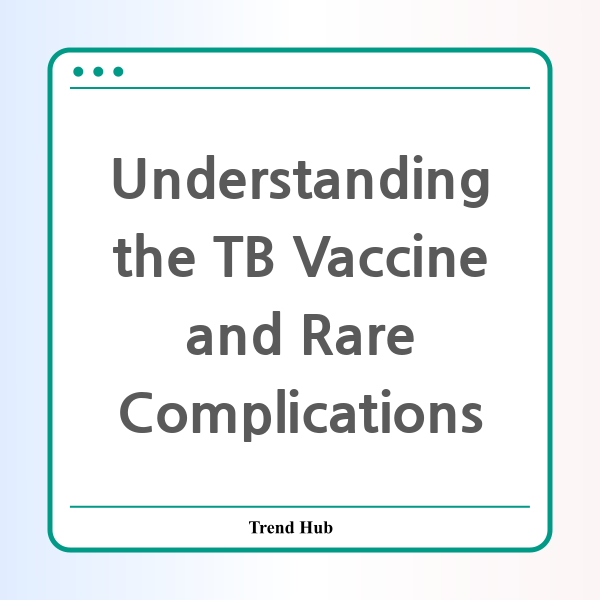* This website participates in the Amazon Affiliate Program and earns from qualifying purchases.

What Should You Know About BCG Vaccine Complications?
The Bacillus Calmette-Guérin (BCG) vaccine is a well-known preventive measure against tuberculosis (TB), particularly in children. While it offers significant protection, it's important to understand that it can also lead to various complications. Among these, post-vaccine osteomyelitis is exceptionally rare but potentially serious. This post will explore the complexities of the BCG vaccine, highlighting a case of sternal osteomyelitis and the exciting advancements in genetically engineered mycobacteria aimed at improving vaccine safety and effectiveness.
Rare Complications of the BCG Vaccine
Although the BCG vaccine is generally safe, complications such as lymphadenitis, cellulitis, and localized musculoskeletal diseases are documented occurrences. What makes post-vaccination osteomyelitis particularly alarming is that its presentation is often atypical, leading to delayed diagnosis. A recent case study described an 11-month-old boy, fully vaccinated with BCG and previously healthy, who developed a firm swelling on his anterior chest wall.
Initial imaging through computed tomography (CT) and magnetic resonance imaging (MRI) revealed unusual irregularities in soft tissue that included lytic changes in the sternum. A fine needle aspiration biopsy provided a definitive diagnosis of post-vaccination BCG-related granulomatous osteomyelitis, confirming the presence of Mycobacterium bovis, the organism responsible for the BCG vaccine.
Treatment and Outcomes
The treatment regimen for this complication included a combination of antibiotics such as isoniazid, rifampicin, ethambutol, and ciprofloxacin. Remarkably, follow-up imaging one month post-treatment indicated a significant reduction in the lesion by 90%, demonstrating the effectiveness of the intervention and the importance of prompt and appropriate treatment.
Innovations in Mycobacterial Research
In another exciting development within the realm of TB vaccination, researchers are exploring the potential of genetically engineered strains of Mycobacterium tuberculosis and M. bovis. These engineered strains incorporate kill-switch mechanisms, allowing for better safety profiles in future vaccine formulations and offering avenues for controlled human infection studies. This research is rooted in the hope of developing safer vaccines and new treatments for tuberculosis, which continues to be a global health challenge.
These innovative approaches signify not just a step forward in our understanding of mycobacterial behavior but also represent a critical advancement in the fight against tuberculosis, making vaccines safer and more effective for everyone.
Conclusion
While the BCG vaccine remains a cornerstone in preventing tuberculosis, awareness of potential complications such as sternal osteomyelitis is essential for healthcare professionals and parents alike. Furthermore, the ongoing research into genetically modified mycobacteria promises to revolutionize the landscape of TB prevention and treatment. Staying informed about these developments is crucial as we strive toward effective solutions against this pervasive disease.
* This website participates in the Amazon Affiliate Program and earns from qualifying purchases.